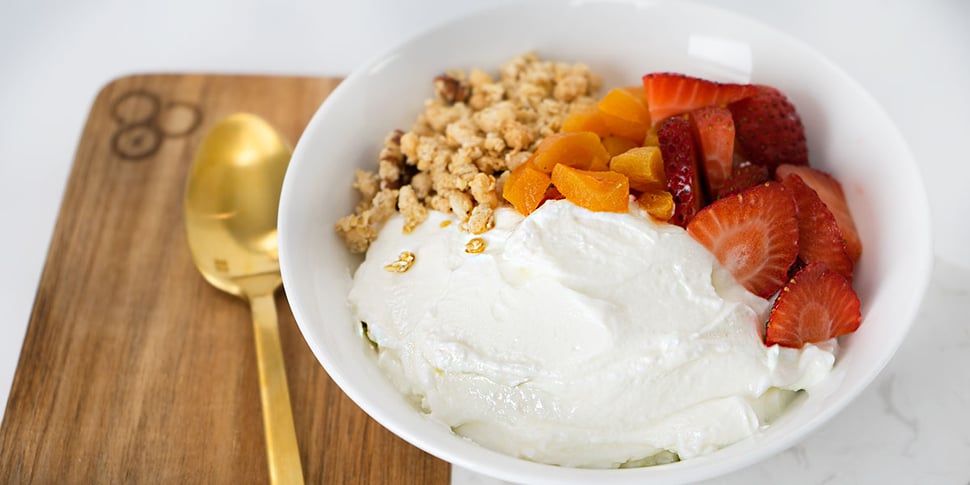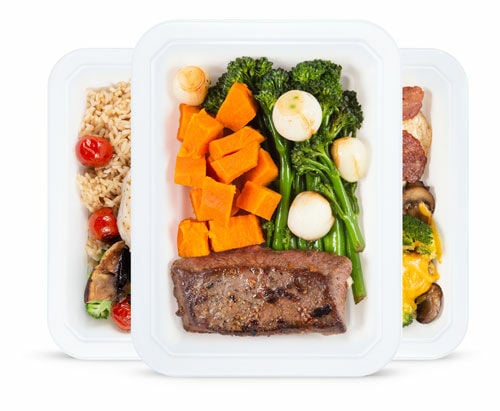Fermented foods are quickly becoming a health-food staple thanks to their role in supporting digestive health and reducing inflammation. Research is still emerging, but early evidence suggests that fermented foods can be beneficial when included as a part of a diverse and balanced diet.
What even is fermentation?
Fermentation involves allowing naturally present or added microorganisms such as bacteria, yeasts, and mycelial fungi and their enzymes, to work their magic in the absence of oxygen. Ideally, this leads to the killing of any pathogenic bacteria, creating an environment in which beneficial bacteria can thrive.
The beneficial bacteria that are produced through this process are where most of the potential health benefits of fermented foods come from. Scientific studies continue to investigate the link between the microorganisms inhabiting our microbiome and our health.
Historically, foods were fermented for preservation, but this process also became useful for enhancing the taste and textures of foods, such as olives, which are inedible without fermentation.
3 common types of fermentation used to produce fermented foods both commercially and at home include:
- Lactic acid fermentation: used to make sauerkraut, pickles, kimchi, yogurt, and sourdough.
- Alcohol fermentation: used to make wine, beer, and other alcoholic beverages.
- Acetic acid fermentation: used to produce vinegar, tangy condiments, and kombucha.
Fermented foods can be found in cuisines from almost every culture in the world, only recently in the US has there been a surge in popularity of these foods for their proposed health benefits.
What kinds of foods are fermented?
The most common foods that are fermented include dairy products, grains, and fresh vegetables such as cabbage, cucumbers, and fruits. Meat and seafood can be fermented as well.
There is an endless list of foods that can be fermented since there are many ways to adapt to the process of fermentation such as using fermentation as a part of the food production process.
You may be surprised to know that fermentation is used as a part of the manufacturing process to produce chocolate, coffee beans, and white pepper! All of these ingredients are actually the seeds of fruits with thick and pulpy outer shells. To remove the tough exterior and get to the seeds (aka bean), the fruits are harvested and wet-fermented. Once the seed is removed it is dried and processed.
Why are fermented foods good for you?
1. They can contain added or natural probiotic bacteria.
Many fermented foods contain probiotic bacteria, which are living, non-pathogenic microorganisms that provide health benefits. Lactobacillus and Bifidobacterium are two of the most commonly studied species thought to reinforce the good bacteria naturally present in our gut (1).
Focusing on nourishing healthy bacteria in our gut with prebiotics and probiotics may help with health issues like blood sugar control, maintaining a healthy weight, reducing inflammation, and supporting intestinal motility (2).
The concentration of probiotic microorganisms and nutrients within fermented products will vary based on a variety of factors such as processing, type of ingredient used, and age and time at which the products are consumed.
Look for fermented foods with the words 'naturally fermented' or 'live cultures' to ensure they contain live probiotics. Another simple way to tell if a fermented food contains live probiotics is to look for bubbles in the liquid, signaling live microorganisms.
2. Fermentation can make food more digestible.
Some of the foods we consume contain anti-nutrients such as phytic acid, which occur naturally in grains, nuts, seeds, and legumes.
Phytic acid is referred to as an 'anti-nutrient' because it has been shown to bind to other minerals such as iron, zinc, and magnesium. and calcium making them less bioavailable (2). Phytates can also make it harder to digest starches, proteins, and fats.
Luckily processes such as milling, soaking, germination, and fermentation can be used to reduce the phytic acid content in food by up to 90% depending on the food (3).
3. They may contain higher amounts of hard-to-find nutrients.
The process of fermentation can increase the concentration of vitamins and minerals such as important B vitamins such as riboflavin, niacin, thiamin, and biotin. This is especially beneficial for those following a plant-based diet, vegan, or vegetarian diet, who may struggle with consuming foods with adequate amounts of B vitamins, iron, and other trace minerals.
The probiotics, enzymes, and lactic acid in specific fermented foods also increase the bioavailability of these vitamins and minerals in the body.
Who should not eat fermented foods?
To be clear, there is little to no evidence in humans that certain fermented foods can treat or improve specific health conditions, so caution should be applied. Eating too many fermented foods may even trigger unwanted symptoms in some individuals (4).
If you struggle with digestion issues, histamine intolerances, food sensitivities, or food allergies you may want to avoid eating too many fermented foods and should consult with your primary care physician or a registered dietitian before making any big changes to your diet.
Some people may experience gas and bloating when they increase prebiotic and probiotic-rich foods in their diet, or when they begin taking a probiotic supplement. This can be normal as your body may need time to adjust to the changes in your diet, and this is often a sign that the probiotics are killing the harmful gut bacteria and fungi; these symptoms usually go away after a week or so (5, 6).
11 Fermented Foods for Gut Health
Adding fermented foods to your diet is easy as you can find naturally fermented foods at most supermarkets and farmers' markets!
1. Kimchi
Kimchi, a staple in Korean cuisine, consists of salted and fermented vegetables prepared with a variety of seasonings.
You can find pre-made kimchi in the refrigerated section at most grocery stores. These tend to have a tart and spicy taste and are prepared with vegetables like Napa cabbage and bok choy.
Incorporate small amounts of kimchi into your diet by mixing it into a taco salad or taco bowl, using it as a garnish for a stir fry, or enjoying it as a side dish on its own.
Kimchi packs more than beneficial bacteria, 1 cup (150g) of kimchi also contains vitamins and minerals such as magnesium, potassium, vitamin A, K, and riboflavin (7).
2. Sauerkraut
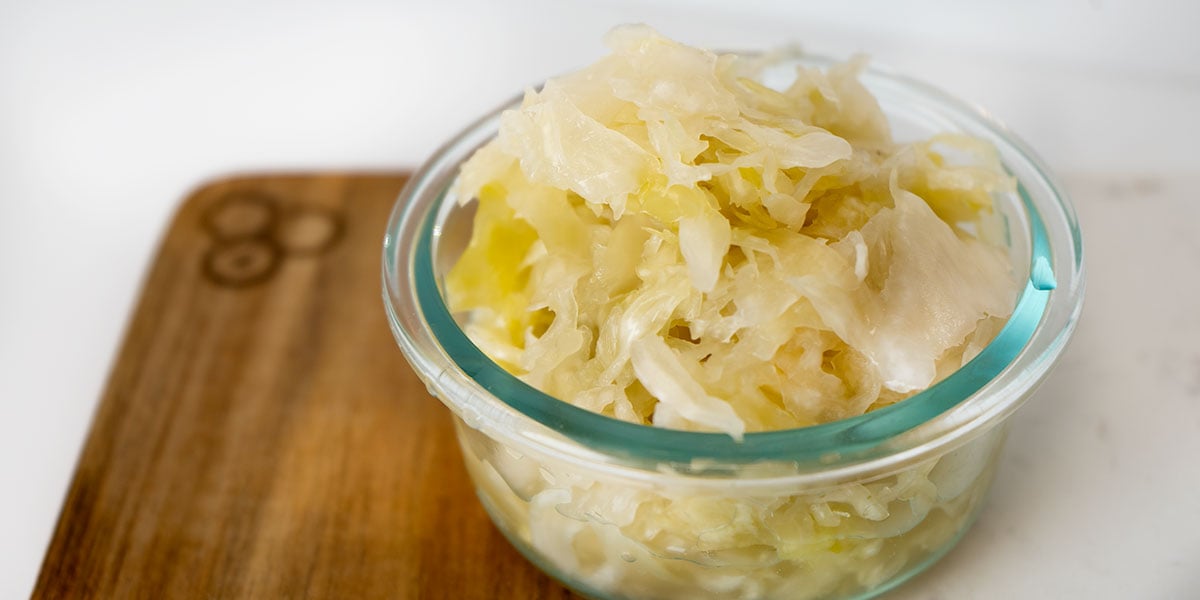
Sauerkraut is another lacto-fermented food classically prepared by combining shredded cabbage with 2.3%- 3.0% salt. It's one of the most common forms of fermented foods, dating as far back as the 4th century BC.
You can easily make your own sauerkraut at home, all you need is a bowl, cabbage, salt, and a mason jar!
Some sauerkraut recipes will call for different spices like turmeric, cumin, and red pepper flakes or other fresh ingredients such as grated ginger and garlic. There are endless flavor combinations when it comes to preparing sauerkraut.
In terms of culinary uses and food pairings, there are many ways to eat sauerkraut. Use it as a condiment, put it on top of scrambled eggs, add it to a burrito, top your avocado toast, or even blend it into a salad dressing!
3. Yogurt
Most of us know that yogurt contains beneficial probiotics, and certain varieties also pack a nice amount of protein.
The drawback is that some yogurts contain high amounts of added sugars. When purchasing yogurt, be sure to look for ones with less than 18 grams of sugar in them.
Unless you are counting your macros, you don't have to worry about purchasing whole-fat yogurt vs greek or non-fat yogurt. The fat contained in whole-milk yogurts isn't necessarily bad for you as dietary fats play a role in hormone metabolism and cell membrane health.
You can easily grab a yogurt for breakfast, use it in your morning smoothie, or prepare a yogurt parfait as a healthy dessert.
On average, one plain, non-fat Greek yogurt (7 ounces) has 146 calories, 19 grams of protein, 8 grams of carbs, and 4 grams of fat (8).
4. Kefir
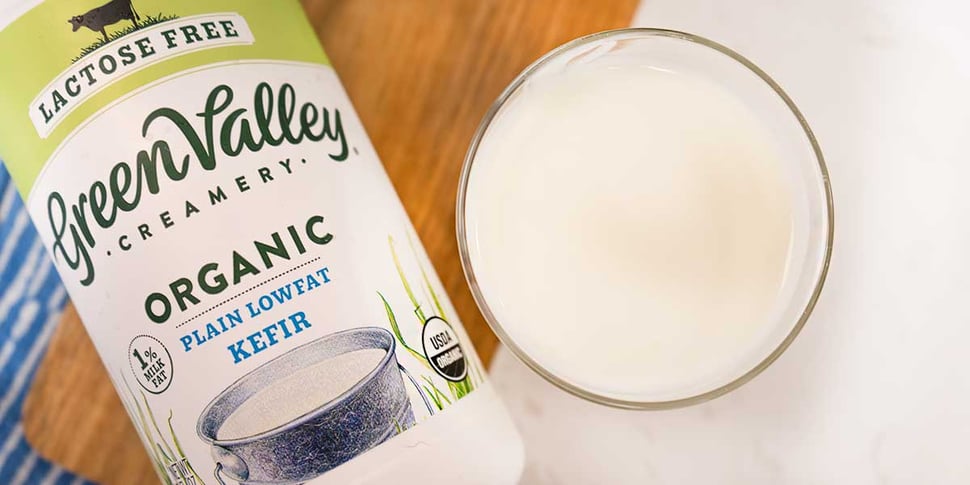
Kefir is a fermented food, similar to yogurt but with a thinner consistency. This drink has been consumed for centuries as it is highly popular in parts of Europe and Asia but has only recently started to gain popularity in the US.
Kefir is fermented with a combination of bacteria and yeast, called "kefir grain," while yogurt is solely fermented with the bacteria in the milk. Most kefirs will have a tangy flavor thanks to the fermentation process.
No single fermented food is created equal, making them challenging to study because every bottle of kefir could contain varying amounts of probiotics. There is evidence showing that kefir may be beneficial for lactose malabsorption and managing H.pylori infection but there are currently no large studies that show the effects of kefir in functional bowel disorders such as IBS (3).
Enjoy drinking kefir on its own, use it in smoothies or prepare a hearty breakfast bowl with kefir, granola, and fresh fruit. A dairy-free version is also available, called water kefir, which is a fermented drink made of water, sugar, and water kefir grains, although this version has not been studied for its nutritional or health benefits.
Nutrition per 1/2 cup of plain, low-fat kefir: 52 calories, 5 grams of protein, 1.5 grams of fat, 6 grams of carbohydrates (9).
5. Kombucha
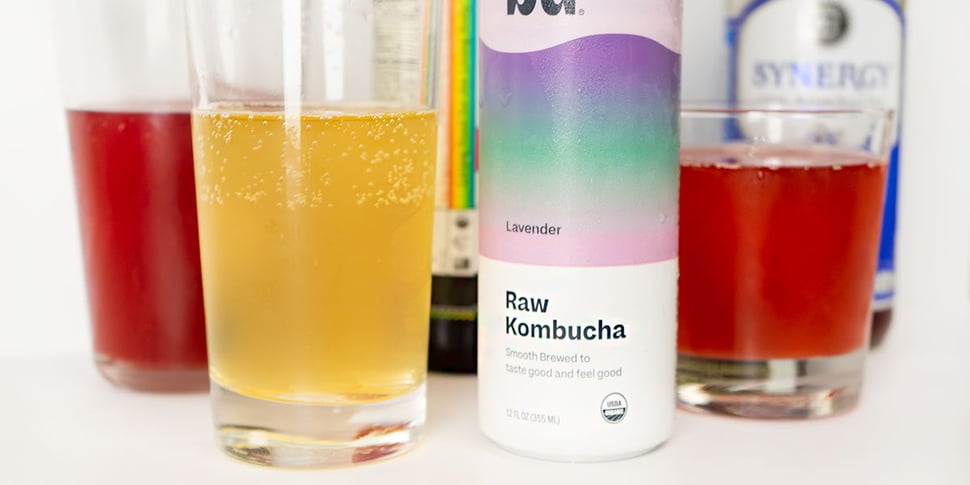
Kombucha is a popular fermented beverage that has been a staple of cultures internationally for thousands of years. Like kefir, kombucha is fermented with the help of both bacteria and yeast, except instead of kefir grains, the living culture used to brew this effervescent and bubbly drink is called a Scoby.
The term SCOBY is an acronym for "symbiotic culture of bacteria and yeast" and is closely related to bacteria and yeast used to make vinegar. During the fermentation process, these living cultures consume the sugars present in the kombucha base (usually a sweetened tea), and release carbon dioxide, giving kombucha its fizziness; this takes about 7-10 days.
Kombucha can be a cocktail of various beneficial probiotic microorganisms, along with other nutrients such as amino acids, zinc, B-vitamins, and vitamin C, although this varies greatly based on the ingredients used and the fermentation process (10).
Be careful though, drinking too much kombucha can lead to excess sugar and calorie intake if you are not mindful about reading the ingredient label and purchasing a brand with little to no added sugars.
Drink kombucha on its own or use it as a liquid to blend smoothies, prepare homemade nut milk, or even add some probiotic kombucha to raw sauces such as homemade pesto!
It may sound weird, but utilizing a liquid like kombucha to blend an uncooked sauce like pesto or salad dressing is another way to increase your intake of probiotics.
6. Miso
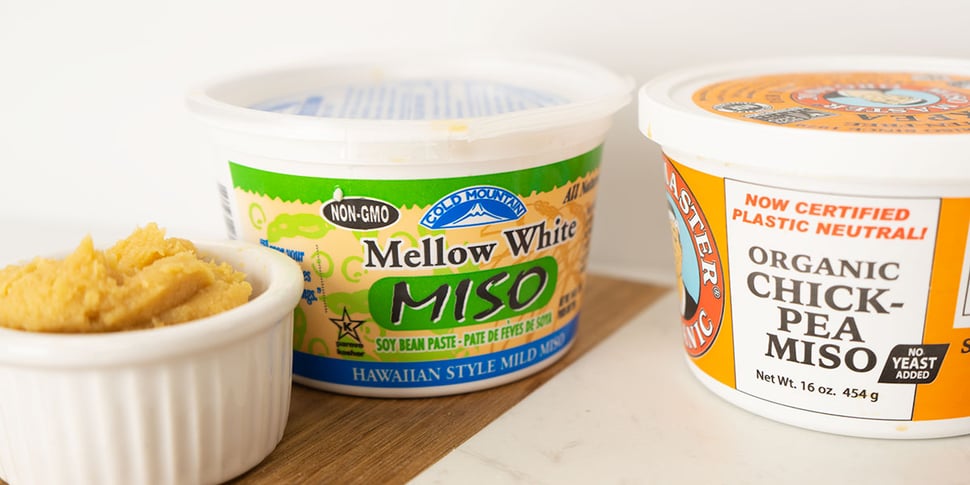
Miso is a Japanese fermented food made from fermenting soybeans with salt and koji, a natural mold cultivated from rice, barley, or soybeans.
When shopping for it in the grocery store, you may run across different types from white miso (shiro miso) to red miso (aka miso) as there are many varietals of miso ranging in texture, flavor, and color. The darker colored miso tends to have a more robust, salty, funky, umami flavor than the lighter colors.
A simple way to use miso is to prepare a miso soup, but you can also use this paste as a base for a flavorful salad dressing or in marinades, gravy, vegetable dishes, and even other soup dishes as well.
If you are looking for soy-free miso, you are in luck! There are multiple soy-free miso-like varietals made from farro, chickpeas, and even lima beans on the market that offer similar umami flavor.
7. Tempeh

Another fermented soybean product, tempeh, is a popular plant-based protein staple of many vegetarians and diets.
To make tempeh, soybeans are first cooked then pressed into a dense cake, inoculated with tempeh starter, typically Rhizopus mold spores, and then allowed to ferment. Tempeh tends to have a nutty and savory flavor and can be marinated, used in sandwiches, salads, stews, and more.
1/2 cup of regular tempeh provides 160 calories, 17 grams of protein, 6 grams of carbohydrates, and 9 grams of fat, along with trace amounts of vitamins and minerals such as calcium. phosphorus, potassium, niacin, and folate (11).
8. Fermented "Pickled" Vegetables
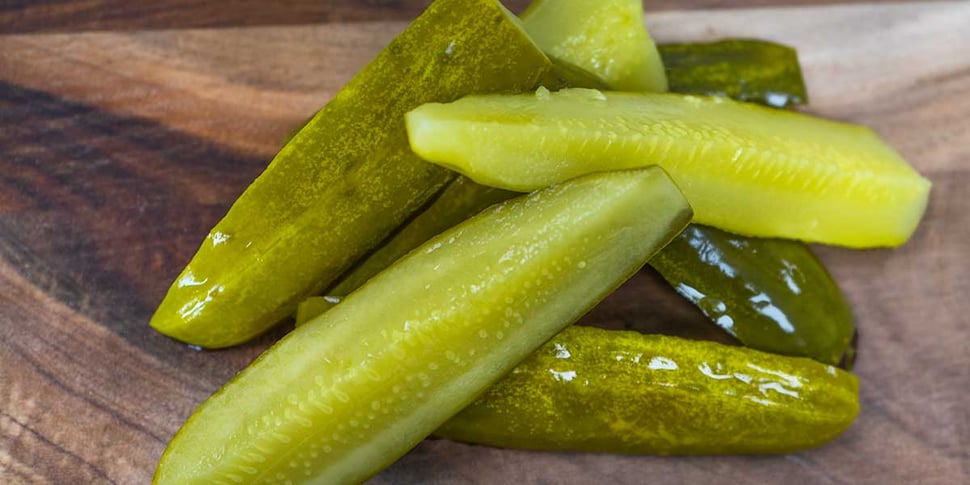
Yes, your jar of pickled cucumbers in your fridge is considered a probiotic food, but this is only true if they have been fermented not just pickled.
What's the difference? Foods that have been 'pickled' refer to vegetables preserved in a salt and acidic brine, vs fermented vegetables, whose sour flavor comes from the fermentation process, aka the lactic fermentation mentioned earlier in the article.
Sauerkraut is one common version of fermented vegetables, but you can also find a variety of lacto-fermented vegetables at the grocery store. Dill pickles are traditionally lacto-fermented, and using the same process, you can ferment vegetables like carrots, cauliflower, garlic, and tons of other veggies!
9. Apple Cider Vinegar
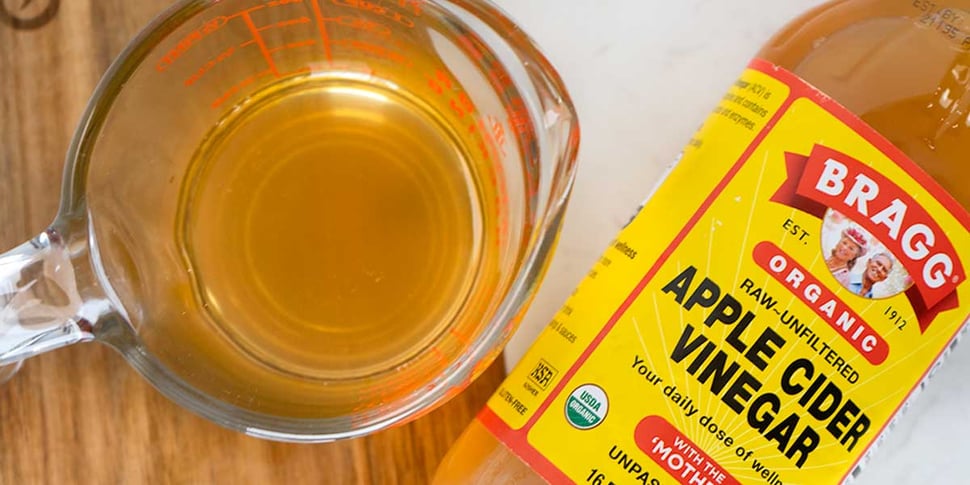
There is an ongoing debate on whether or not apple cider vinegar can be called a probiotic, as that title is reserved for living microorganisms known to provide health benefits when consumed.
Although some small studies suggest apple cider vinegar may have some potential health benefits, there is not enough long-term research to support any proven effects on human health that apple cider vinegar may have.
But the lack of scientific studies on the effects of taking apple cider vinegar doesn't mean it can't be considered a gut-health food as apple cider vinegar does contain healthy bacteria such as Lactic acid bacteria (LAB), aka Lactobacillus bacteria, and Acetic acid bacteria (12, 13).
There are plenty of ways to incorporate apple cider vinegar into your diet indirectly; use it as a base for a salad dressing or seasoning for sauces and marinades.
10. Sourdough Bread
Sourdough bread is prepared from a starter culture that is produced through the fermentation of flour by lactic acid bacteria and yeasts. Growing your own starter culture takes about seven days to start and involves continually feeding your starter with fresh flour and water.
Over time, your starter will grow and become a symbiotic blend of bacteria and yeast that gives the bread its unique texture, flavor, and nutritional content! The starter itself is rife with probiotics such as lactobacillus, although how much of these survive the baking process is unknown.
The process of sourdough production can also lower the bread content of non-digestible carbohydrates, resulting in bread that may be more tolerable by those following a low-fodmap or gluten-free diet (11).
Moral of the story, if you're going to enjoy bread for toast in the morning or are making sandwiches like a pesto chicken sandwich, pick up some fresh sourdough from your local farmers market!
11. Ginger and Ginger Beer
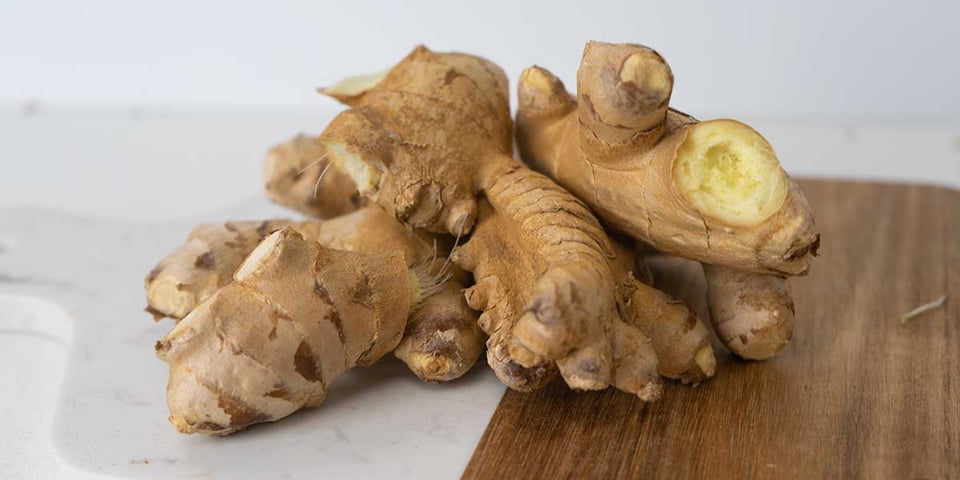
Traditionally brewed ginger or root beer is prepared similarly to kombucha; a symbiotic colony of yeast and lactobacillus bacteria aids in fermenting the ginger, sugar, and water into a delicious carbonated beverage.
Ginger has been used for generations as a natural home remedy for soothing digestive upsets, and thanks to modern scientific studies, we now know that ginger has various therapeutic effects. Ginger contains antioxidant, anti-inflammatory, and immuno-supportive compounds (15).
So it's no surprise that this probiotic-filled drink may be a better choice over other alternative sweet carbonated beverages. That being said, always be sure to read the label—even ginger beers can contain unwanted excess sugars. Aim to find a brand with as little added sugar as possible, or like any food that's a bit sweet, aim for moderation!
Ginger beer and ginger ale are used interchangeably to refer to a fermented ginger soda; ginger beer tends to be stronger in flavor.
Recipes to add more fermented foods to breakfast, lunch, and dinner
Overall, a meal plan rich in fermented foods may help enhance the diversity of gut microbes and decrease inflammation, so layering fermented foods into your weekly meal prep can be another way to boost your gut health (3).
Fermented dairy products can be easily enjoyed for breakfast as a yogurt parfait or kefir smoothie, but other fermented foods can be a little more challenging to incorporate into your diet. Here are two tips to help:
- Use them as a garnish: Because fermented foods contain living organisms, you'll get the most out of some of them by adding them to recipes after cooking, like a garnish. If you're struggling with your meal prep for the week and don't have time to cook, we got you! Use our meal plan quiz to shop for the meal plan that best fits your health goals, then all you need is a jar of pickled vegetables for garnish. A little sauerkraut or kimchi goes wonderfully with our breakfast scrambles.
- Prepare recipes that make it easy to add like a stir-fry or rice bowl: Adding more fermented foods into your diet can be as easy as making a quick stir-fry or rice bowl. Quickly saute them into your recipe at the end or simply top off the bowl once you're ready to eat!
Ready to nourish your gut health? Order Trifecta today to include more enriching foods in your meal plan.
Get your ready-to-eat, macro-balanced, and chef-prepared meals delivered directly to your door!



